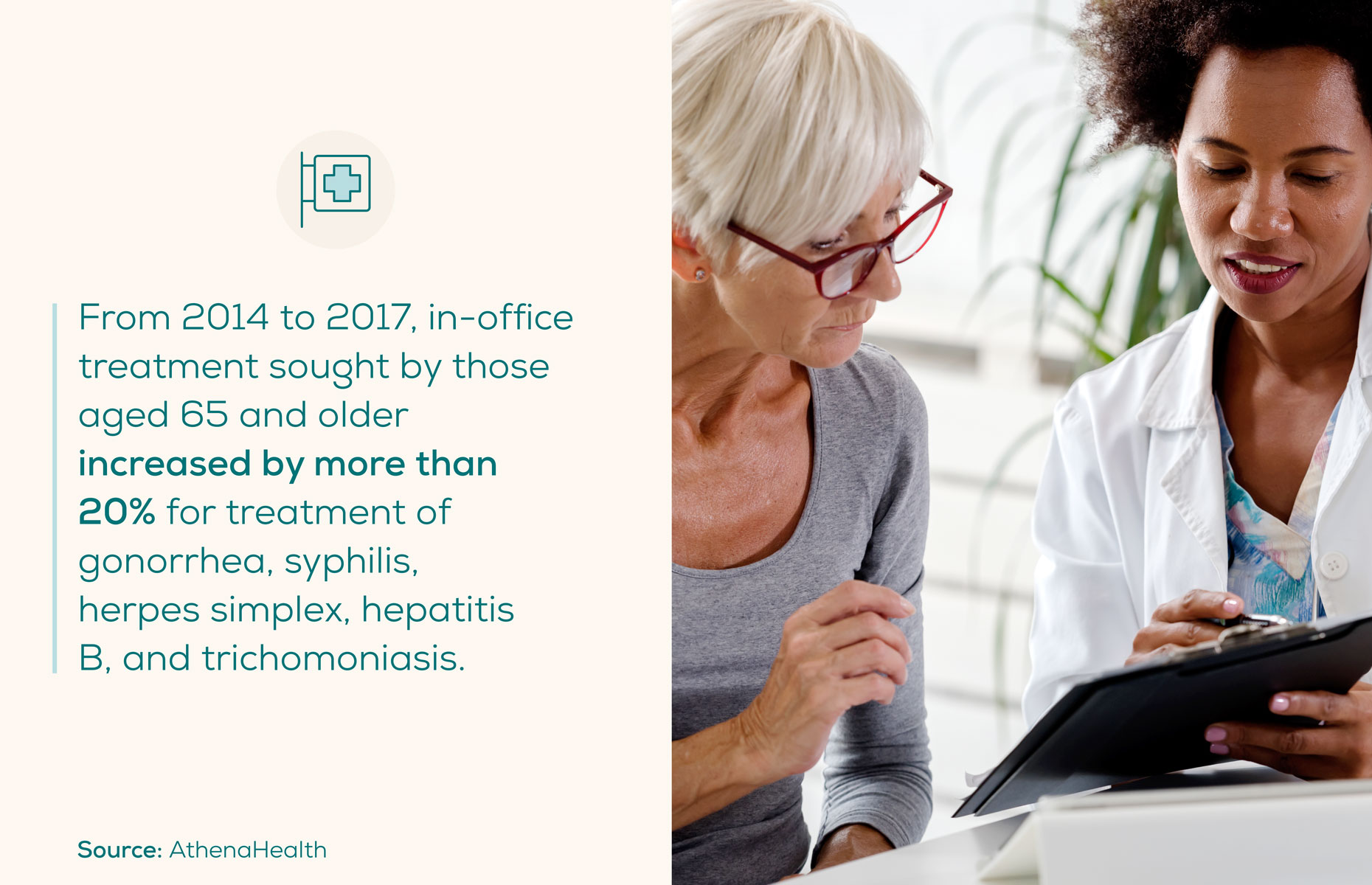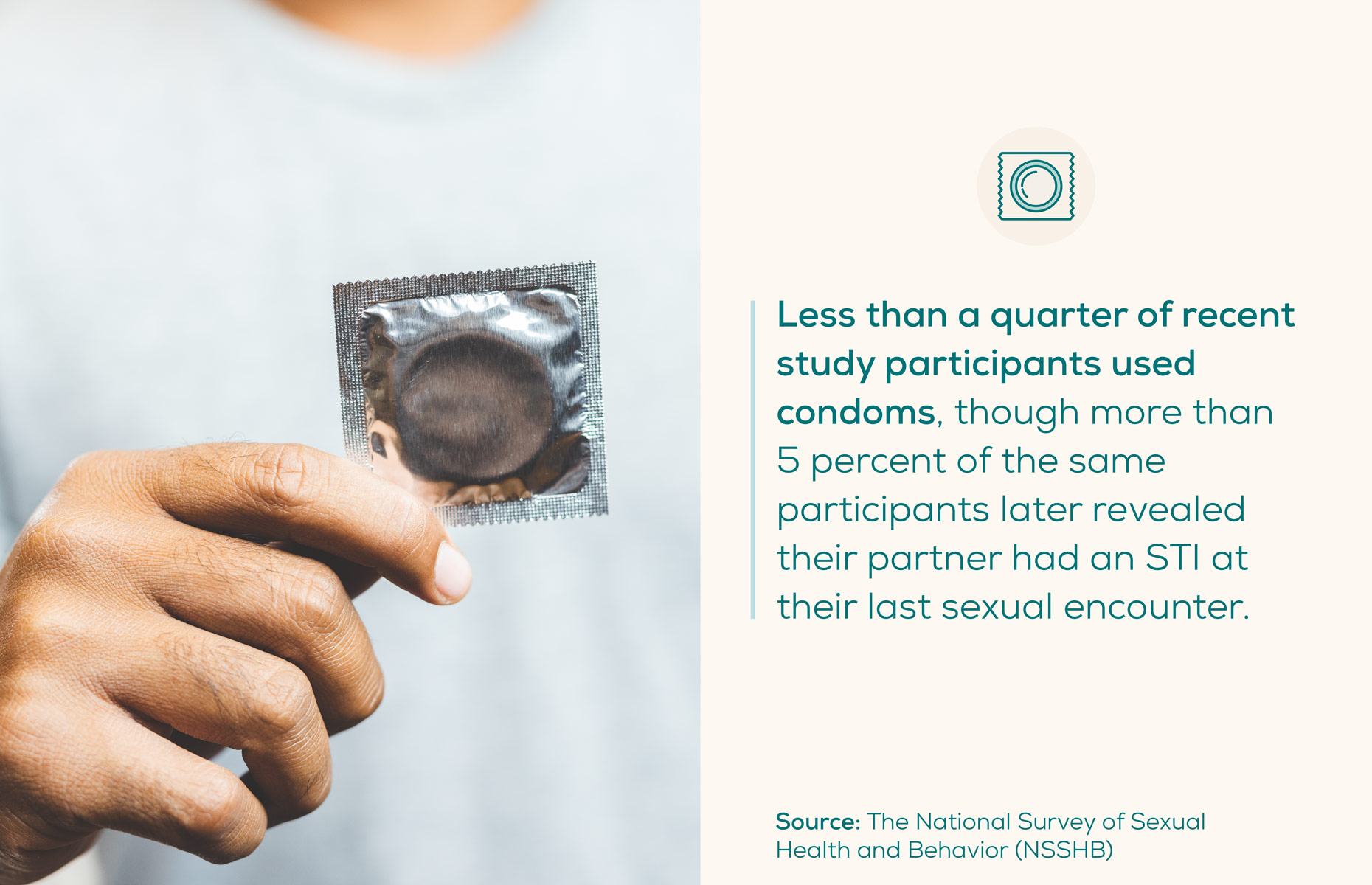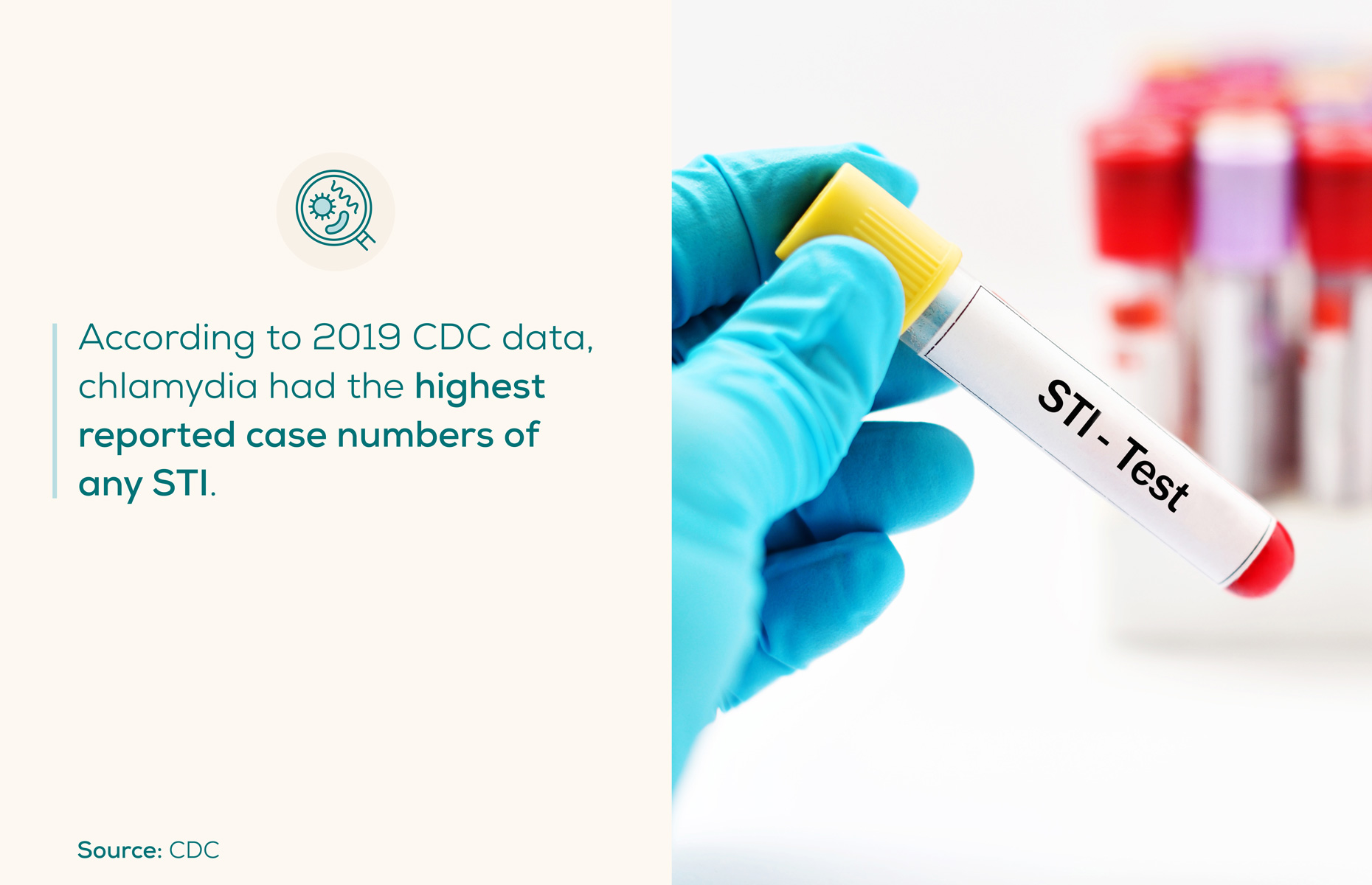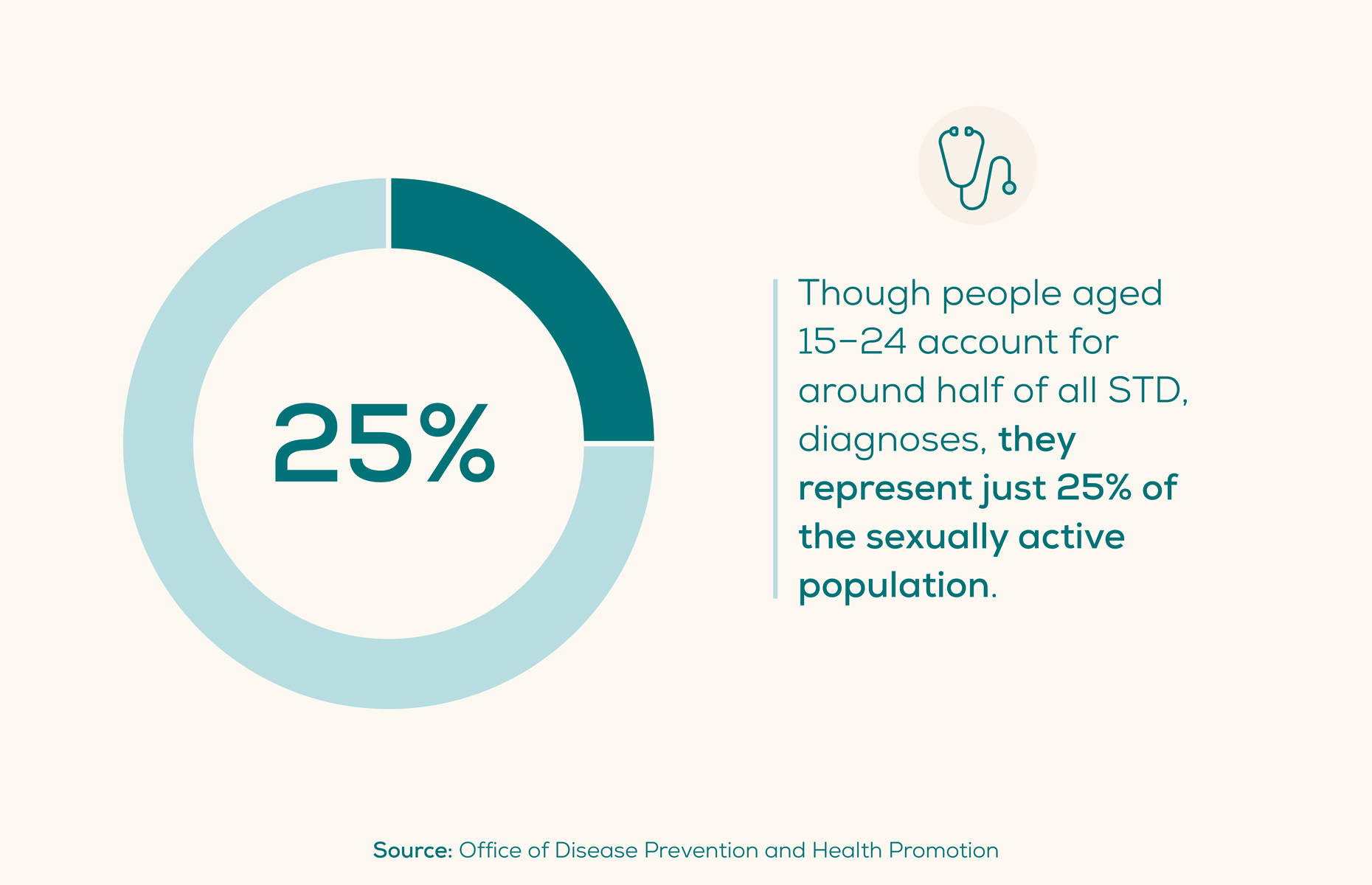
STDs in Older Adults: Everything You Need to Know as You Age
Table of Contents:
- How Prevalent Are STIs in Older Adults?
- Why the Increase in STIs in Older Adults?
- STI/STD Symptoms
- Concerns Around STIs and Older Adults
- STD Protection and Prevention for Seniors
- Additional Resources for Sexually Active Seniors
Many things change as you age — your hair color, ideal Friday night, and career may all look different than they once did, but that doesn't mean your behavior in the bedroom needs to change, too. Many older adults continue to enjoy an active sex life as they age, which can lead to increased self-esteem and better quality of life.
However, sexual safety doesn't go out the window as you age, meaning that necessary vigilance with protection and other sexual health concerns don't change, either. Sexually transmitted diseases (STDs), often used interchangeably with sexually transmitted infections (STIs), in older adults should remain as big a concern as they were in your youth.
Read on for more insights on what to know about STIs as you age to ensure you can continue having an active, but safe, sex life.
How Prevalent Are Sexually Transmitted Infections (STIs)/STDs in Older Adults?
While the highest numbers of STDs are reported by those between the ages of 15 and 24, the number of cases for older adults is on the rise. The Centers for Disease Control and Prevention have found that rates of chlamydia, gonorrhea, and syphilis among U.S. adults aged 65 and older have nearly doubled in the past ten years.
One electronic health record network of more than 110,000 healthcare providers, found that older adults also represent the largest increase in in-office treatment of STIs, growing more than 20 percent over the course of 2014 to 2017 for treatment of gonorrhea, syphilis, herpes simplex, hepatitis B, and trichomoniasis.
Read on for a breakdown of three nationally notifiable STIs: chlamydia, gonorrhea, and syphilis.
Chlamydia
Chlamydia is the most common notifiable STI in the United States.
- There were over 1,800,000 cases of chlamydia reported in 2019.
- Over 28,300 chlamydia cases in 2019 were reported by people between the ages of 55 to 64+.
- More women than men reported chlamydia infections in 2019.
- Those aged 15–29 had the highest reported chlamydia infection rates in 2019.
- Though the yearly increases in chlamydia cases in older age groups are incremental, year-over-year growth rates show that this is a rapidly growing infection among older adults aged 65 and older.
Gonorrhea
Gonorrhea is the second most commonly reported disease in the United States.
- In 2019, there were over 616,00 reported gonorrhea cases across age and gender.
- Older adults between the ages of 55 to 64+ accounted for over 30,600 gonorrhea reports in 2019.
- More men than women reported gonorrhea infections in 2019, with almost double the reports.
- The age group with the highest reported gonorrhea infection rates in 2019 were aged 20–29.
- While many men with gonorrhea are asymptomatic (meaning they do not show symptoms), most women often report such mild gonorrhea symptoms that are mistaken for a bladder infection.

Syphilis
The primary and secondary (P&S) syphilis stages are the earliest stages of symptomatic infection. If left untreated, syphilis can progress and later stages of disease can affect multiple organ systems, including the brain, nerves, eyes, heart, liver, bones, and joints.
- Across genders, those aged 55–64+ had over 5,600 reports of P&S syphilis in 2019.
- Both men and women report similar infection rates of P&S syphilis, with 38,900 men reporting and 32,400 women reporting infection in 2019.
- The age group with the highest reports of P&S syphilis in 2019 were those aged 25–29.
- In 2019, the majority of P&S syphilis cases occured among gay and bisexual men who had sex with other men.
- Men who have sex with men, as well as men who have sex with men and women, accounted for 47% of all P&S syphilis infections in 2019.
Why the Increase in STIs/STDs Among Seniors?
It's worth wondering why STI diagnoses are increasing for the older population. Safe sex is emphasized to teenagers and young adults but is less commonly brought up to older crowds — so it can be easy to see how some older adults may just think they no longer need to be as careful as they were in their youth.
In fact, divorced or widowed adults living in congregated communities have reported an increased openness to sexual experimentation that they may not have felt in their younger years.
Fifteen percent of men and 9 percent of women over the age of 50 in a 2010 study revealed they had sex with a new acquaintance or transactional partner. Though this feeling and increase in casual sex are great for self-confidence, it may lead to an increased risk for STIs.

This problem is further exacerbated by the belief that many older adults may have little knowledge about the risks STIs pose and adopt an "out of sight, out of mind" philosophy for those possible risks. Many older adults claim either a general lack of knowledge about STIs or just have limited chances to discuss sexual health with healthcare providers due to shame, stigma, or other factors.
One big knowledge gap is highlighted by condom usage. Condoms are necessary at any age to prevent STIs, but older generations report the lowest condom usage rates of any age population — in fact, less than a quarter of all participants ages 50 and older in The National Survey of Sexual Health and Behavior (NSSHB) reported using condoms with their partners, even though more than 5 percent of participants revealed their partners had a known STI at their last sexual encounter.
STI/STD Symptoms
One of the first things older adults can do to better educate themselves about the risks STIs pose is to learn common symptoms. Though symptoms can vary from person to person and across types of STIs, some can be asymptomatic — meaning you are infected but aren't showing any symptoms.
If you suspect you have been exposed to an STI but haven't shown any symptoms, you should get tested, for you can still pass an STI on to a partner even if you don't show symptoms.
Read on for more information on STI symptoms based on the STI in question.
Chlamydia Symptoms
Chlamydia is a bacterial infection caused by Chlamydia trachomatis that is transmitted through sexual contact with the penis, vagina, mouth, or anus of an infected partner. Many individuals infected with chlamydia show few or no symptoms. For those who develop symptoms, they may start anywhere from one to three weeks after exposure and are generally mild and are treated with medication.
Symptoms vary, but may include:
For women:
- Abnormal vaginal discharge
- Burning sensation when urinating
For men:
- Burning sensation when urinating
- Pain and swelling in one or both testicles (uncommon)
- Penile discharge
Rectal infection symptoms:
- Bleeding
- Discharge
- Rectal pain
Genital Herpes Symptoms
Highly contaigous, genital herpes, is caused by herpes simplex virus (HSV-1 & HSV-2) and can be transmitted from vaginal, anal, or oral sex with someone who has disease. Many people with HSV will never know they have it due to either never showing symptoms or having mild, unnoticeable symptoms.
When symptoms present, they may include:
- Itching or pain around the genitals, buttocks, and inner thighs
- Small red bumps, blisters, or open sores (ulcers) in and around the genitals, anal areas, and mouth
When ulcers are present, they can cause painful urination and pain or tenderness in the affected areas until the blisters subside. The initial outbreak can cause flu-like symptoms, such as a fever, muscle aches, headache, and swollen lymph nodes in the groin.
Gonorrhea Symptoms
Gonorrhea is a bacterial infection caused by Neisseria gonorrhoeae that infects the genital tract, but the bacteria can also infect the anus, mouth, throat, and eyes. Generally, symptoms first appear one to 14 days after exposure.
Gonorrhea symptoms and signs may include:
- Pain or burning during urination
- Swollen, painful testicles
- White, yellow, or green discharge from the penis
- Increased vaginal discharge
- Anal itching
- Bleeding between periods
- Painful bowel movements

Hepatitis C Symptoms
Hepatitis C is a liver infection caused by the Hepatitis C virus. (HCV). HCV is transmitted through exposure to infectious blood or body fluids. While exposure from injection-drug use is the most common mode of transmission, sex with an HCV-infected person can occure.
More than half of the people who become infected with the hepatitis C virus, will develop a long-term, chronic infection which can result in liver disease and cancer. If you've been exposed, there is a chance you’ll never show symptoms, though for those who do, the average period of time from exposure to symptom onset is 2-12 weeks.
Hepatitis C symptoms may include:
- Abdominal pain or discomfort, especially where your liver is located on your right side under your lower ribs
- Dark urine
- Fatigue
- Fever
- Itchiness
- Joint or muscle pain
- Nausea or vomiting
- Yellowing of the skin and whites of eyes, also known as jaundice
HIV Symptoms
Caused by an infection with the human immunodeficiency virus, HIV greatly interferes with the body's natural ability to fight off illness-causing bacteria, viruses, or fungi. When untreated, HIV can also lead to an eventual diagnosis with AIDS (acquired immunodeficiency syndrome), which can be life-threatening.
Though many chronic symptoms of HIV may not present for up to 10 years after exposure without medication, there are several early-stage (acute) HIV symptoms that include:
- Fatigue
- Fever
- Rash
- Sore throat
- Swollen lymph nodes (often one of the first signs of HIV infection)
- Mouth ulcers
Human Papillomavirus (HPV) Symptoms
HPV is the most common STI and generally has no signs or symptoms. Some types of HPV can cause cervical cancer in women and other HPV-related cancers in women and men, while other types cause genital warts.
Genital warts may appear as small, flesh-colored or gray swellings around the genitals (may be as small as one millimeter in diameter, or can multiply into clusters that resemble a cauliflower. They can cause additional symptoms such as discomfort or itching around the genital and may bleed during intercourse.
Most HPV infections go away on their own; however, if an infection persists, it is possible to develop HPV symptoms months or years after getting infected. Often, genital warts cause no symptoms, th
Syphilis Symptoms
Syphilis is a bacterial infection caused by Treponema pallidum that can affect your genitals, skin, and mucous membranes, though it can involve any other part of your body — including your heart and brain in later stages of infection. Syphilis is divided into stages, with different signs and symptoms associated with each stage.
Symptoms of primary and secondary syphilis may include:
- Rash of red or reddish-brown, penny-sized sores on any area of the body, including palms of the hands and soles of the feet that last three to six weeks regardless of treatment
- Enlarged lymph nodes
- Fatigue
- Fever
- Sore throat
- Headaches
Concerns around STIs/STDs and Older Adults
As an older adult, there are a few concerns prevalent to your age group when diagnosed with a sexually transmitted infection. As you age, the immune system naturally becomes less effective at fighting off illnesses and infections, and some symptoms of STIs, such as painful urination, fever, sore throat, swollen lymph nodes, may be confused with signs of another infection.
The medications used to treat certain STIs may interact with other medications you are taking so it is always important to discuss your medications with your healthcare provider.

There is also a stigma surrounding STIs and older adults, particularly for those who are sexually active with multiple partners. This may make discussing STIs or other sexual health complications with a doctor difficult, particularly if older adults do not have access to healthcare or the ability to make regular appointments with their healthcare provider.
If you as an older adult find yourself facing any of these issues, especially if you think you may have become infected with an STI, you may consider at-home lab test options or see if telehealth appointments are available.
STD/STI Protection and Prevention for Seniors
No matter your age, doing what you can to prevent and protect yourself from getting or spreading an infection to your sexual partners is important. While one way to avoid STI infection and spread is to be in a long-term, mutually monogamous relationship with an uninfected partner, it's not the only way to protect yourself.
Wearing Condoms and Other Protection
A common misconception is that condoms are only good for preventing pregnancy, but they actually do much more. Proper male latex condom usage can reduce both partner’s risk of contracting STIs that are passed through sexual intimacy. It should be noted that some STIs (genital herpes, syphilis, and HPV) can be transmitted without intercourse, through skin or mucosal contact.
Though wearing a condom will not eliminate your risk of getting an STI entirely, they have been proven highly effective and it's still a good idea to implement this into your sexual health routine so you're doing what you can for your health and your partner’s health.
Having an Honest Conversation
There's no shame in having an STI—millions of adults get diagnosed with one each year, and many are treatable with medication. However, that doesn't mean you shouldn't discuss having one with your partner prior to having sex, especially if this will be your first encounter with them. It's important to always disclose any diagnoses you may have with a partner, so they're in the loop regarding your health and its possible effect on them.
Having an honest, open conversation about STIs with your partner can help prevent further transmission. If you don't know how to bring up the fact that you have an STI, try the following conversation starters.

Getting Recommended Screenings and Tests
Pap smears and HIV screening are generally not a normal part of wellness exams for people over 65, so it can be easy to forget to get tested when you're no longer being reminded. If you are older than 65 but have had multiple new partners, have a sex partner with an STI or who is living with HIV, it's impritant to discuss testing options with your doctor or another liscened professional.
Whether you choose to get an at-home lab test or visit a doctor, getting tested when you have symptoms of an STI or may have been exposed to an STI by a partner with a known STI or unknown STI status, STI tests are important.
Many gynecologists and healthcare providers can test for multiple STIs from a single sample. Prioritizing your health in this way not only helps you care for yourself but your sexual partners as well.
Educating Yourself
Even if you don't have an STI now, that doesn't mean you will never be exposed to one. Understanding common STIs, how they're transmitted, and your personal risk factors can all help you be educated on how to better protect yourself from infection. Knowledge is power, especially with something that can be transmitted as easily as an STI.
Whether you've been diagnosed with an STI as an older adult or are curious about how to prevent them, it's important to remember there's no shame in having an STI at any age. With at-home lab testing to make it easy and discreet to get your answer, you can rest easy knowing that your health is protected.
Additional Resources for Sexually Active Seniors
If you're looking for additional information regarding safe sexual health for seniors and older adults, we've got you covered with helpful resources for sexually active seniors, from at-home lab testing information to practicing safe sex regardless of age.
Sexual Health and Safety:
STD Testing Resources & At-Home STI Lab Tests:
- Which STD Tests Should I Get?
- At-Home Chlamydia and Gonorrhea Test
- At-Home Hepatitis C Test
- At-Home HIV Test
- At-Home STD Test – Female
- At-Home Syphilis Test
- At-Home Trichomoniasis Test
Related Content
Sexuality and Aging: Your Guide to Maintaining Sexual Health
STD Testing for Seniors: What You Need to Know
38 STD and STI Statistics for College Students: How To Keep Yourself Healthy and Safe
References
Mayo Clinic | Harvard Medical School | Office of Disease Prevention and Health Promotion | Centers for Disease Control and Prevention | AthenaHealth | National Institute of Health
